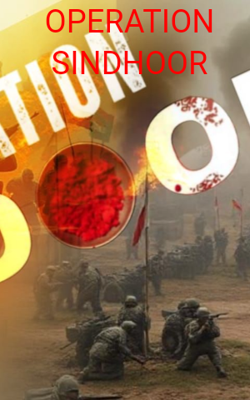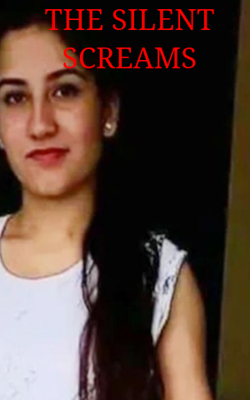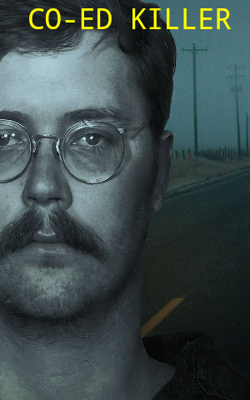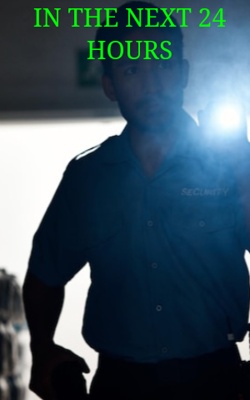THE ESPIONAGE CASE
THE ESPIONAGE CASE


NOTE: This story is inspired from the life of scientist Sir Nambi Narayanan. It depicts his struggles after he had been framed for a false espionage case, based on several articles with references to Ormakalude Brahmanapadham: An Autobiography and Ready to Fire: How India and I survived the ISRO Spy case written by Nambi sir.
30 NOVEMBER 1994:
THIRUVANANTHAPURAM, KERALA:
Nambi Narayanan was accused of being a “spy” and leaking classified information on India’s space program to two Maldivian intelligence officers, who then allegedly sold the drawings and documents of ISRO’s rocket engines to Pakistan. People around and near Nambi’s house refuse to let them inside their house. They forbids them to attend festivals and family functions.
Nambi’s family is beaten up by the public and political parties. Their house is pelted with stones. Nambi Narayanan’s son Shankar Nambi, a businessman is hit by some political party leaders. While, his daughter Geetha Arunan, a Montessori school teacher in Bangalore was humiliated with cow dung applied in her face. Her husband Subbiah Arunan an ISRO scientist (director of the Mars Orbiter Mission and Padma Shri awardee) faces backlash when travelling in the bus.
YEARS LATER:
25 JUNE 2022:
INDIAN INSTITUTE OF MANAGEMENT, AHMEDABAD:
R.B.Sreekumar, a former IPS officer has been arrested by Gujarat Police officer ASP Sai Adhithya IPS. Nambi Narayanan, now 80-year old comes to attend an interview with ASP Sai Adhithya, who had been called for an important event in IIM University of Ahmedabad. There, each and every people were ready to listen the duo’s conversations. While, the college students were busy chatting in Whatsapp and Instagram. They were not much interested to listen the two’s conversations.
After setting up the place, Adhithya asked Nambi: “Sir. Why were you so happy that former IPS officer RB Sreekumar has been arrested by me and our police forces? Any personal reasons?”
With his bearded face, Nambi looks at Sai Adhithya. Nambi have been wearing glass. He replied: “Mr. Sai Adhithya. There is no personal reasons for me. I came to know that he was arrested today for keeping on fabricating stories and trying to sensationalize them, there was a charge against him. It is also what he did in my case also. I am very happy to note that he has been arrested because there is limit for everything and he is crossing all the limits in terms of decency.”
Pausing for a while, he further said: “When he was arrested, I was very happy because he will keep on doing this kind of mischief all the time, there must be an end to such a thing. That is why I said, I am very happy. Same thing applies to me in respects.”
“Ok sir. Before dealing with this espionage case, shall we start about your jourey as a scientist with your mentor and guru Vikram Sarabhai?” asked Sai Adhithya, to which Nambi Narayanan feels glad. He said: “Oops. I thought you are very keen to investigate about this espionage case. But, you are eager to know about my guru Vikram Sarabhai also.”
FEW YEARS BACK:
1969:
Nambi was born on 12 December 1941 in a Hindu family in Nagercoil, in the erstwhile princely state of Travancore. He completed his schooling at DVD Higher Secondary School, Nagercoil. He did his Bachelor of Technology in Mechanical Engineering from Thiagarajar College of Engineering, Madurai. Nambi Narayanan lost his father while pursuing his degree in Madurai. He had two sisters. As soon as his father died, his mother fell sick. Nambi married Meena Nambi and had two children.
After studying mechanical engineering in Madurai, Nambi started his career in 1966 at ISRO as a technical assistant at the Thumba Equatorial Rocket Launching station. Vikram Sarabhai encouraged him to pursue higher studies in Rocket propulsion and he was accepted into Princeton University and also earned a NASA fellowship which is a huge achievement. He completed his master's in chemical rocket propulsion under Luigi Crocco and returned to India with a specialization in chemical rocket propulsion. At that time ISRO was working on solid propellants under Dr. APJ Abdul Kalam. Nambi Narayan thought that India should have its indigenous built liquid propulsion engine as liquid propellants give higher efficiency and he observed that countries like USSR(Russia), and the USA are working on Liquid propulsion and building large rockets with higher payload capacity liquid propellant engines were required. So Narayanan developed liquid propellant motors, first building a successful 600 kilograms (1,300 lb) thrust engine in the mid-1970s and thereafter moving on to bigger engines.
He had excellent managerial and organizational skills and he believed that the commercial space market would be a trillion-dollar business which is true if you observe the business in the space industry.
PRESENT:
“Sir. Some said that you saved the life of Doctor A.P.J.Abdul Kalam at an ISRO lab during the experimentation work progress!” said Sai Adhithya. Nambi recalled the event, the moment he spoke about Abdul Kalam.
1967:
For a large number of Indians, Dr Kalam is known as a fisherman’s son-turned-scientist who rose to the top pose. Fondly remembered as the “Missile-Man” Kalam worked for the Indian Government’s aerospace and defence establishments.
But this very “Missile Man” Kalam had a narrow miss from an explosion, during his days as a young scientist with the fledgling Indian Space Research Organization. ISRO(then known as INCOSPAR) was in it’s nascent stage and operated out of a small church in the Thumba Fishing Hamlet, in Kerala’s capital Thiruvananthapuram. Most of the scientists working there were young graduates with a drive to experiment and learn as much as they could about a new discipline- Rocket Science.
All they had were experimental rockets(known as sounding rockets) that were fired to an altitude of 100 kilometers or less. Most of these sounding rockets were offered by friendly foreign countries to conduct upper-atmospheric experiments. For perspective, the sounding rockets of that era are a molehill when compared to the mountains(the PSLV and GSLV series) that ISRO launches today.
While preparing for the launch of one such French Centaure rocket, a gunpowder-based igniter was being made by Nambi Narayanan. Once at the right altitude, the igniter would trigger a small explosion and release the rocket’s chemical payload into the atmosphere, thus helping conduct the experiment. However, one day before the launch, Narayanan came across a scientific principal that their gunpowder would not fire at the height of 100 km.
When Narayanan apprised Kalam of the same, he initially refused to accept it. But later on, Narayanan’s persuasion, the duo went on to test the theory. The duo set up a contraption where a sealed jar of gunpowder was connected to a vacuum pump(to create upper atmosphere-like thin air and low pressure). Multiple attempts were made to ignite it, but the 1942 theory by scientists Able and Noble was dead right!
Wanting to set up close, this phenomenon of gunpowder behaving in an inert-manner, a young Kalam poked his nose into the gunpowder-laden jar. The countdown had started and the assistant was ready to ignite the gunpowder, but that’s when Nambi Narayanan realized that the vacuum pump was not properly connected to the jar. This meant that the gunpowder would explore as usual.
Within a second, Nambi Narayanan leapt across and pushed Kalam down to safety, before a blast rocked the room and glass splinters flew all across. After the smoke had settled, Kalam sat up and told Nambi, “See, it fired.” This was how the young duo proved that Able and Noble were right and also that gunpowder would fire at normal pressure.
On 30th December 1971, Vikram Sarabhai was to review the SLV design before his departure for Bombay the same night. He had spoken to A.P.J.Abdul Kalam on the telephone. Within an hour of the conversation, Sarabhai died at the age of 52 due to cardiac arrest in Trivandrum. His death is a great loss for both Nambi and Abdul Kalam.
PRESENT:
“Vikram Sarabhai’s death have deeply affected you. How did you handled the aftermath in ISRO, sir?” asked Sai Adhithya, to which Nambi said: “I was unable to handle the aftermath. Things were against me. I wasn’t able to roam arrogantly as before during Vikram Sarabhai’s tenure.”
1974:
After being saved by Nambi in laboratory, Abdul Kalam went on to work in various roles in ISRO, DRDO and other government organizations. Nambi went on to become the Father of Liquid Propulsion Rocket Engine Technology in India. In 1974, Societe Europeenne de Propulsion agreed to transfer the Viking engine technology in return for 100 man-years of engineering work from ISRO. This transfer was completed by three teams and Narayanan led the team of forty engineers who worked on technology acquisition from French. Other two teams worked on indigenizing the hardware in India and establishing the development facilities in Mahendragiri. The first engine, named Vikas, was tested successfully in 1985.
PRESENT:
“Vikas Engine is a major turning point in ISRO. Even after twenty five years, it never failed. It’s a magnetic success of ISRO. Even a Launch Engine failed, Vikas Engine never failed. Without Vikas Engine, nothing could go to the Space for major missions. It’s a truth, which can’t be hidden. What a big success this is sir!”
“Thank you Sai Adhithya” said Nambi Naryanan.
Smiling a while, Adhithya asked Nambi: “But, you won’t stop here right. Your next target is Cryogenic engine. Am I right sir?”
“Yes. Although we have solid fuel engine and liquid fuel engine, we couldn’t be able to compete in the satellite launch without cryogenic engine. I was the head and chief of Cryogenic engine. Since we don’t have time to launch our own cryogenic machine, we sent a tender for getting the machine from world nations.”
1992:
ROCKET CLUB, THIRUVANANTHAPURAM:
Russia, China, France and USA were the only countries capable of launching GSLV. France and USA were selling it for a pretty steep price. So India struck a deal with it’s long term ally Russia. Russia agreed to provide the technology to India at a very low and decent price. This made the big brother United States very upset.
In 1992, India signed an agreement with Russia for the transfer of technology to develop cryogenic fuel-based engines and procurement of two such engines for ₹ 235 crores. However, it did not materialize after US president George H.W Bush wrote to Russia, raising objections against the transfer of technology and even threatening to blacklist the country from the select-five club. Russia, under Boris Yeltsin, succumbed to the pressure and denied the technology to India. To bypass this monopoly, India signed a new agreement with Russia to fabricate four cryogenic engines, alongside two mock-ups for a total of US$9 million, after floating a global tender without a formal transfer of technology. ISRO had already reached a consensus with Kerala Hi-tech Industries Limited which would have provided the cheapest tender for fabricating engines. But this failed to materialize due to the spy scandal of 1994. If the required cryogenic engines were developed during this period then ISRO would have been way more above than it is today. Due to this infamous scandal, ISRO was dragged 10 years backward.
PRESENT:
At present, Sai Adhithya asked Nambi Narayanan: “Sir. Indian Army and ISRO scientists were real heroes sir. What an inspiring life! In one hand rocketry and on the other hand, life. What an adventure! I feel like watching James Bond. After three years, Uduppi Ramachandra Rao retired. Despite this, you didn’t stop from your efforts. Without any manual guidance, you have been creating cryogenic engine. But, before you could succeed in this, your dreams became a curse. Am I right?”
(The period of 1994 unfolds in the mode of First person narration, said by Nambi Narayanan)
OCTOBER 1994:
Maldivian national Mariam Rasheeda was arrested in Thiruvananthapuram for allegedly obtaining secret drawings of ISRO rocket engines to sell to Pakistan. I(director of cryogenic project at ISRO) was arrested along with deputy director of ISRO D. Sasikumaran and Indian representative of a Russian space agency K. Chandrasekhar, S.K.Sharma, a labor contractor and Fousiya Hasan, a Maldivian friend of Rasheeda.
I was charged with leaking vital defence secrets to two alleged Maldivian intelligence officers, Mariam Rasheeda and Fauzia Hassan. Defense officials said the secrets pertained to highly confidential “flight test data” from experiments with rocket and satellite launches. Narayanan was among two scientists (the other being D. Sasikumaran) that were accused of selling the secrets for millions. However, my house seemed nothing out of the ordinary and did not show signs of the corrupt gains I was accused of.
I was arrested and spent 48 days in jail. The Intelligence Bureau (IB) officials who interrogated me wanted to make false accusations against the top brass of ISRO. The two IB officials had asked me to implicate A. E. Muthunayagam, his boss and then Director of the Liquid Propulsion Systems Centre (LPSC). When I refused to comply, I was tortured until I collapsed and hospitalised.
My main complaint against ISRO is that it did not support me. Krishnaswamy Kasturirangan, who was ISRO chairman at the time stated that ISRO could not interfere in a legal matter.
In May 1996, the charges were dismissed as phony by the CBI. They were also dismissed by the Supreme Court in April 1998. In September 1999, the National Human Rights Commission (NHRC) passed strictures against the government of Kerala for having damaging my distinguished career in space research along with the physical and mental torture to which he and his family were subjected. After the dismissal of charges against us, the two scientists, Sasikumar and I was transferred out of Thiruvananthapuram. We were given desk jobs.
(First person mode of narration ends here)
PRESENT:
At present, along with Sai Adhithya, each and every student are very keen to listen Nambi’s espionage case. While, Nambi recalled about the dirty politics behind his arrest and how CBI came inside this case, indeed.
1994 TO 2001:
Congress played with lives of our Scientists, Space program, helped CIA and compromised national security to win a petty inner party factional fight. In 1994 there was rift brewing in the Congress Party in Kerala. The then CM K Karunakaran led the first faction. A.K. Antony (leader of the rival faction in congress) was planning to topple Karunakaran to install himself as the chief minister. His hit man for the Job was Oomen Chandy, the FM in the Karunakaran cabinet
If Antony had to win the game of thrones, they had to make Karunakaran, a formidable leader in his own right, fall. Karunakaran had the sworn allegiance of most of the Police establishment in Kerala, whom he had a special liking to. One of Karunakaran’s blue eyed officers was IG Raman Srivastava an exceptionally talented officer with impeccable integrity. But Raman Srivastava was on the cross-hairs or another officer DIG Siby Mathews, who was Oomen Chandy’s close confidant.
Siby Mathews knew that he could never be DGP if Raman Srivastava remained in the force and was out to sabotage Srivastava. Hence the plan was to bring down Karunakaran by framing Srivastava. The wolves were looking for the perfect opportunity. Any collateral damage was acceptable to these people to meet their goals.
This is when a Senior Inspector Vijayan came across an admirable looking Maldivian Woman Mariyam Rasheedha who had come to the commissioner office to get her Visa extended. Vijayan wanted “certain favours” from Mariyam and was promptly rebuked. Seemingly she told Vijayan, that she would complain to his IG.
At another level, IB additional director Rattan Sehgal who was later discharged for being a CIA mole was looking at sabotaging the Indigenous Cryogenic Engine program of ISRO being worked on at Liquid Propulsion Systems Centre, Mahendragiri.
Rattan Sehgal’s target were the two scientists who were critical to the program, Nambi Narayanan and Shasi Kumar. He let his deputy RB Sreekumar into this conspiracy. Sreekumar was very close to Antony faction of the congress establishment in Kerala. He was already part of the discussions of the Antony faction to bring down Karunakaran Govt. Does the name RB Sreekumar sound familiar? Yes, the Additional DGP Intelligence of Gujarat during the 2002 riots who made false allegations against Modi on behalf of the Congress.
All pieces of the game were failing together for RBS , Siby and the Antony Faction of the Congress. They knew this would be at the cost of the lives of 2 Maldivian women, an honest IPS officer and two top scientist of ISRO who were heading a prestigious program for India.
India was denied cryogenic technology by the US under MTCR , and even the Russians withdrew after pressure from the group. India had to develop its own Cryogenic engine. The task was given to Nambi Narayanan and Shasi Kumar of LPSC. They were the main people behind India’s space warhorse PSLV.
Evidently each of the conspirators knew if these scientists are taken out of the picture, India’s Space and Missile program will suffer a body blow. But for the Antony faction they didn’t care for the nation or its security, they just wanted to take out the rival in the party. For Siby Mathews, it was his promotion which mattered. For Rattan Sehgal its was the dole from CIA which mattered. For RBS, pleasing his Congress bosses mattered. The nation mattered to none of them.
Thus a grand conspiracy was created, a leading Malayalam newspaper was roped in as the chief propagandists. The modes of communication were set. The senior editor suggested that reports should have a mix of sex and sleaze. Writers who could spice up the police versions were pulled into write stories in the publication.
One fine day Kerala and India woke up to the story of two middle aged scientist from ISRO who were honey trapped by two Maldivian women, Mariyam Rasheeda and Fawzia Hassan . We were told the two scientist sold India’s cryogenic engine secrets in exchange for sex and millions of dollars.
The National and Malayalam media reported every version put out by the police. The leading Malayalam publication, and its commissioned soft porn writers put our stories with vivid details of sexual encounters of the Maldivian women involving the scientist’s and a senior police officer in Kerala.
In few days stories of the Police officer being close to the CM Karunakaran involved in the Espionage was covered in the media. Thus hinting that the CM is shielding the officer and hence personally involved in the ISRO Espionage scandal.
The media starts insinuating IG Raman Srivastava as the officer involved and targets Karunakaran for supporting him. It was clear to every one involved that Srivastava did not even have a remote involvement with any of this. But the Antony group cabal had planned this route to get to the jugular of Karunakaran.
The prominent Malayalam media house pumped in more colourful stories. The HC took cognisance of the reports and passed strong strictures against the government for not getting IG Srivastava investigated. Oomen Chandy, who was the then FM, resigned from the ministry to pressurise Karunakaran.
Finally Karunakaran relented and resigned as the CM. Saint Antony took charge as the the CM of Kerala. The Antony cronies at Kerala Police knew that they had no case and they would be castigated by the courts when they present evidence. Hence DIG Siby Mathews recommends transfer of the case to CBI.
Meanwhile the two Scientists Nambi Narayanan and Shashi Kumar undergoes humiliating torture under Kerala Police and at the hands of IB lead by RBS.They are forced to confess a crime which did not exist. The two Maldivian Women are sexually exploited. The families of the two scientist were branded spies and harassed. Nambi Narayanan’s wife was asked to get out of an autorickshaw because she was married to a spy. Even his children were targeted and branded as traitor's.
CBI formed a special team to investigate this high profile case. In the very first week of investigation it was found out that there was not even a shred of evidence against the accused. Forget evidence, the very basis of the case did not exist, there was no “Espionage.”
Still the leading Malayalam publication, created fake stories of how the CBI had admitted to finding large amounts of hidden assets found from the homes of the two scientist. The Media house couldn’t let down the Antony ministry in its early days. If there was no spy case, then the very basis of leadership change collapses .
Finally CBI admitted in court that it was well planed conspiracy by the Kerala Police and there was no case against the accused. It recommended action against KP officers, Siby Mathews, Vijayan, KK Joshua and IB officer RBS .
The SC of India discharged all the accused and ask the Government to take action against the Police and IB officers. Subsequent governments didn’t act on the SC directions. Siby Mathews, was rewarded with the Chief Information Commissioner post by Oomen Chandy, when he became CM. The IB additional director Rattan Sehgal was later caught passing on India’s atomic secrets to CIA and was discharged from service. He fled to the USA.
PRESENT:
At present, Nambi said: “RBS made a career out of Modi abuse and can be seen in the Anti Modi seminar circuit along with Teesta Setalvad and the Seculars. AK Antony went on to become our Defence minister who single handedly led the decay in the infrastructure and preparedness of our Armed Forces.
The other scientist was never rehabilitated even after they were discharged by courts. As said before, we were given desk jobs, and lived with the tag of traitors. The biggest victim of this conspiracy was national security and our space program. The cryogenic engine program was setback by 2 decades and only in 2017 we were able to do a full system flight with this technology. This is the “Congress Mindset” that Modi keeps mentioning. They will eat this country hollow and not bother as long as their petty agendas and the first family is taken care of.”
Thinking for a while, Sai Adhithya asked him: “Sir. Did the Indian government compensated your losses?”
“Yeah. They compensated my losses. But, for my mental sufferings, none could compensate or console.”
2001 TO 2018:
Mar 2001: NHRC awards an interim compensation of ₹10 lakh, asks the state to pay damages; government challenges the order.
Sep 2012: HC directs the state to pay ₹10 lakh to Mr. Narayanan.
Mar 2015: HC leaves it to the state government to consider or not the CBI’s report for taking disciplinary action against the erring police officers.
Apr 2017: The Supreme Court begins hearing on Mr. Narayanan’s plea, seeking action against former Kerala DGP Siby Mathews and others who had probed the matter.
May 3, 2018: Three-judge bench comprising of Chief Justice Dipak Misra, Justices A.M. Khanwilkar and D.Y. Chandrachud says it is considering awarding Mr. Narayanan a compensation of ₹75 lakh and restoring his reputation.
May 8, 2018: SC says it is considering asking Kerala government to re-investigate role of SIT officers in the case.
May 9, 2018: SC says Mr. Narayanan has faced a dent in his reputation due to “malafide prosecution” and Kerala government cannot evade “vicarious liability” to grant him compensation.
Jul 10, 2018: SC reserves verdict on the plea; CBI tells SC it was ready for a Supreme Court-monitored probe into the allegations by Narayanan.
Sep 14, 2018: SC awards ₹50 lakh compensation to 76-year-old Mr. Narayanan for being subjected to mental cruelty in the ISRO spy case.
PRESENT:
At present, Sai Adhithya said in tears: “If you had not been falsely charged for espionage case, India could have even more developed.” Nambi smiled and said: “Not only me Adhithya. Even scientists like A.P.J.Abdul Kalam, my mentor Vikram Sarabhai and a few more were alive, our country would have been a superpower. If India could have developed the cryogenic engines then, the dependency on US, France and even Russia would have ended thereby making India self-sufficient. India could have saved millions and billions of dollars that would have benefited the economy. India could have sold the launch service to many other nations and could have made millions and billions herself.”
“What role did the media play in your espionage case sir?” One of the student in the front bench asked Nambi Narayan through the mike, during the doubts session.
MEDIA IN THE ESPIONAGE CASE:
Indian nuclear scientists have always been under the radar. We can trace this back to Homi Babha(our founding member of Nuclear technology), and his death in the crash of Air India Flight 101 at Mont Blanc. Did those super powers conspire against India in process of Nuclear and Space Research progress for last 70 years? If yes, why? It was known only when a journalist George Douglas was on conversation with then CIA operative head Robert T. Crowley. The conversation relates to the death of Homi Baba and how difficult it has become to complete the work.
Indian media never gave any importance to these news stories as they are mostly biased in favor of a party and all the time engaged in that activity only. USA and France doesn’t want to produce super powers and our own indigenous weapons. They want us to totally dependant on them. This is the reason after First Nuclear test in 1974 during Indira Gandhi regime, even though 5 tests still to be done, have to abandon them as per advise of USSR, which is India’s best country friend then.
Then we have to wait for 24 more years when Sir. Vajpayee ji courageously conducted tests without informing the superpowers and as a secret mission. The second casualty being my mentor Vikram Sarabhai which itself is a mysterious death on 31.12.1971. Even the superpowers are not satisfied with downgrading our Nuclear program. Also they does not want India to progress in space research as well.
PRESENT:
Nambi Narayanan was asked by Sai Adhithya, “Sir. Will your fight for justice continue or end here? What about the culprits?”
“A.K.Antony was made the defense minister of India by the Indian National congress. It was the greatest punishment given by them.” Opening up about how the CBI didn’t cooperate with him, the 80-year old asserted, “I was asking the CBI, why they could not proceed against those people who they think as criminals but the CBI said that is not in their terms of reference, they found out this case is not there so I said it is unfair, you should find out, but they didn’t cooperate with me.”
Wiping off his tears, Nambi stated: “I wanted to punish those culprits who committed this crime. In this country, the helpless person like me, the only savior you see in the visibility is the court, the judiciary. So, I went to the judiciary and kept on fighting the dose till I wanted to achieve what I wanted to achieve. What I wanted to achieve was to punish those people. The fight will end when the people who fabricated it are punished appropriately.”
When asked by a student “If he ever got to know about the motive of the conspirators of if they were ever named and punished?” Nambi replied: “I guessed that they worked on somebody else’s instructions.”
“To the best of my knowledge, I did not have any personal enmity with anyone. There must be some conspiracy at national or international level.” He added. On being asked by another student of IIM about how he preserved through the long trial and kept his spirit intact, Narayanan narrated, “I was out of my financial depth so much so that I argued in court and felt like “giving up” many times, but it was the “sheer willpower” that kept me going. You get frustrated, agitated and feel dreams being shattered. You can’t get out of it easily.”
Now, Sai Adhithya heartily apologized to Nambi Narayanan for the ill-treatment given to him by the public and his police department. However, Nambi chides him and said: “His intention to rebel was not to get the sympathy of this public. It’s to safeguard the lives of future scientists, who may fall a victim to the corrupt administrative system. There’s no history of a country becoming superpower by insulting and suppressing scientists, who worked hard for the welfare of a nation.” Nambi left the place after the conversation through his scooter. While, the IB officer, who ran away to USA, was listening to his conversations through the TV Channel. He leaves the place through his car.
EPILOGUE:
On March 2019: Nambi Narayanan was awarded with Padma Bhushan, India's third-highest civilian award by the President of India. Ormakalude Bhramanapadham: An Autobiography by Nambi Narayanan was written by Prajesh Sen, depicting the life of Nambi Narayanan and the false Espionage case. It’s there in Thrissur Current Books, 2017. Ready To Fire: How India and I Survived the ISRO Spy Case was written by Nambi Narayanan, Arun Ram. It’s there in Bloomsbury India, 2018.




























































